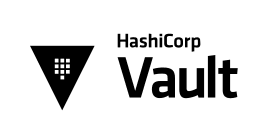Tag: Permissions
Guide to Using Umask Command in Linux
What is Umask in Linux?
Umask (short for user file-creation mode mask) is used by UNIX-based systems to set default permissions for newly created files and directories. It does this by masking or subtracting these permissions. For example, with the usual Umask being set to 022 on most systems all the new files we create will subtract the Umask value from full permissions (for files that would be 666 - 022 = 644). Umask can be expressed in octal or symbolic values.
Top 10 Web Server Security Best Practices
How Can You Ensure Security on a Server?
It is important to secure your server to prevent data loss or security compromises. Because security is such a challenging subject for many, it often goes unheeded. Many are caught unaware when an issue arises. By following these best practices, you can significantly lower your risk of being compromised by a malicious actor.
Remove Permissions for a MySQL User on Linux via Command Line
MySQL via Command Line 101: Basic Database Interaction

A fundamental part of managing users in MySQL is removing permissions no longer required for a user. Administrators should ensure that terminated users or those whose roles have changed within the company have had permissions removed from their user profiles. This action secures the system against unlawful access to information.
Grant Permissions to a MySQL User on Linux via Command Line
MySQL via Command Line 101: Basic Database Interaction
After an administrator creates a MySQL user via the command line on Linux, the next step is to grant permissions to that user. The goal is to ensure that the user is able to log in and access the MySQL server to perform tasks. This article shows you how to grant permissions to a MySQL user on Linux via the command line.
When it comes to the preferred operating system for the backend or server-side of web hosting, CentOS (Community Enterprise Operating System) has long occupied the space. Released in 2004, CentOS is derived from Red Hat Enterprise Linux (RHEL) and, through the years, has strived to provide a free enterprise-class platform that has maintained 1:1 compatibility with RHEL.
Guide to Installing and Configuring Vault

What is Vault?
Vault protects and secures access to multiple types of confidential data. It stores and manages sensitive password information, API keys, and access tokens that exist in a low trust environment and generates dynamic access to authenticate users to ensure they have authorized ingress and availability to a file, location, service, or application.
What is SIEM?

Security Information and Event Management (or SIEM) is a subset of the computer security field, where applications and services join forces with security event management and security information management. When united, these disciplines provide significantly improved real-time statistical data and threat analysis of alerts generated by the related applications. The 2021 Internet Security Threat Report from Sophos denotes that are not only the number of attacks on the rise but also the diverse nature of methodologies and vectors of incursions used. This necessitates the fact that adding a SIEM is especially warranted at this time.
How to Store Secrets in Kubernetes
What is a Secret?
A Kubernetes Secret is an object that enables us to store and manage sensitive information. A Secret can contain data like SSH keys, OAuth data, or other user authentication information like passwords. It is typically stored within a cluster in a manner native to Kubernetes. Using a Secret object provides more granular control over how highly sensitive data is used. It also lowers the risk of data exposure to unauthorized parties.
What is Blockchain? A Tutorial

The idea of blockchain itself may sound complicated, but the premise is simple. Blockchain is a zero-trust, fully decentralized peer-to-peer data storage system that spreads verified information across participants in the chain, referred to as nodes. Blockchain stores this information in blocks that are chained together. As new data arrives, it is recorded into a block. Once a block has been filled with information, it is linked to the previous block. This process allows the data to be bound together in sequential and chronological order.
How to Locate Open Ports in Linux
Our Sales and Support teams are available 24 hours by phone or e-mail to assist.


